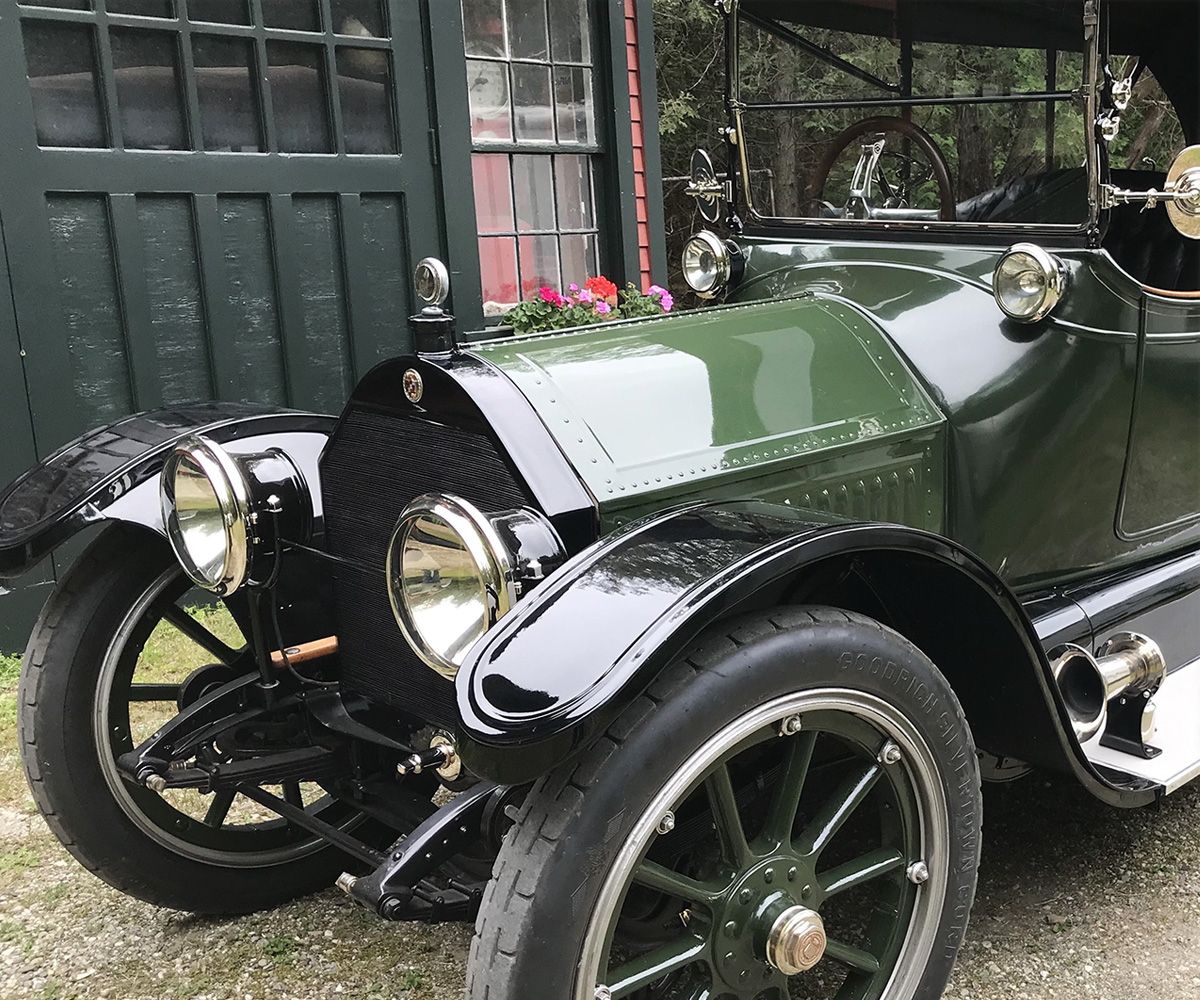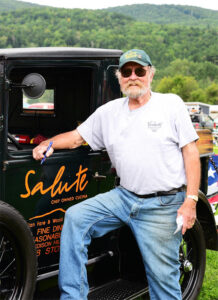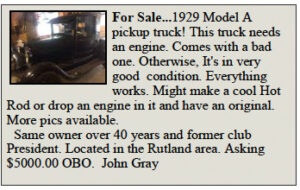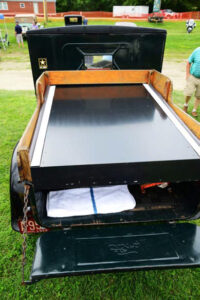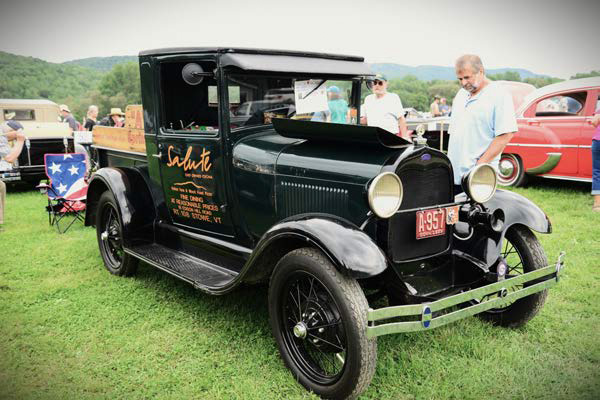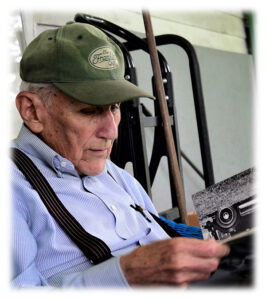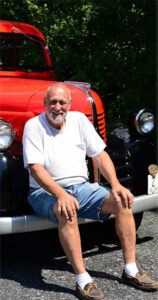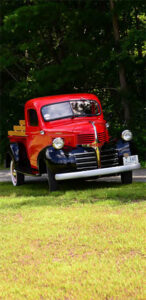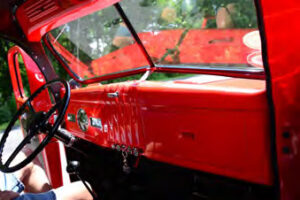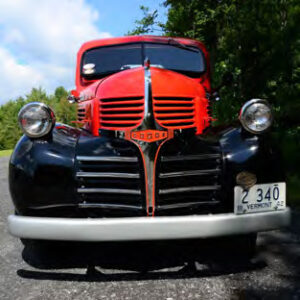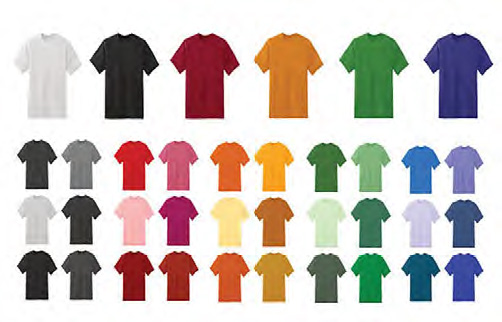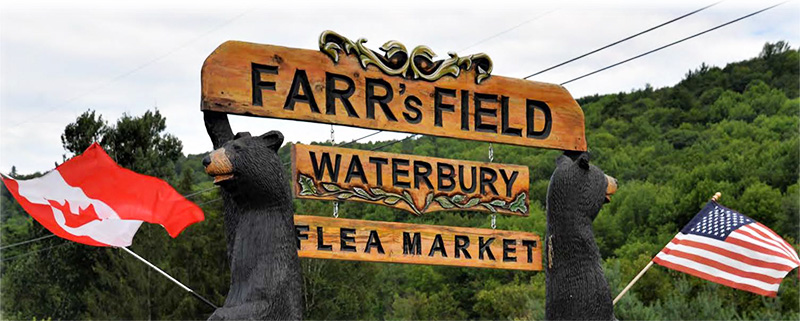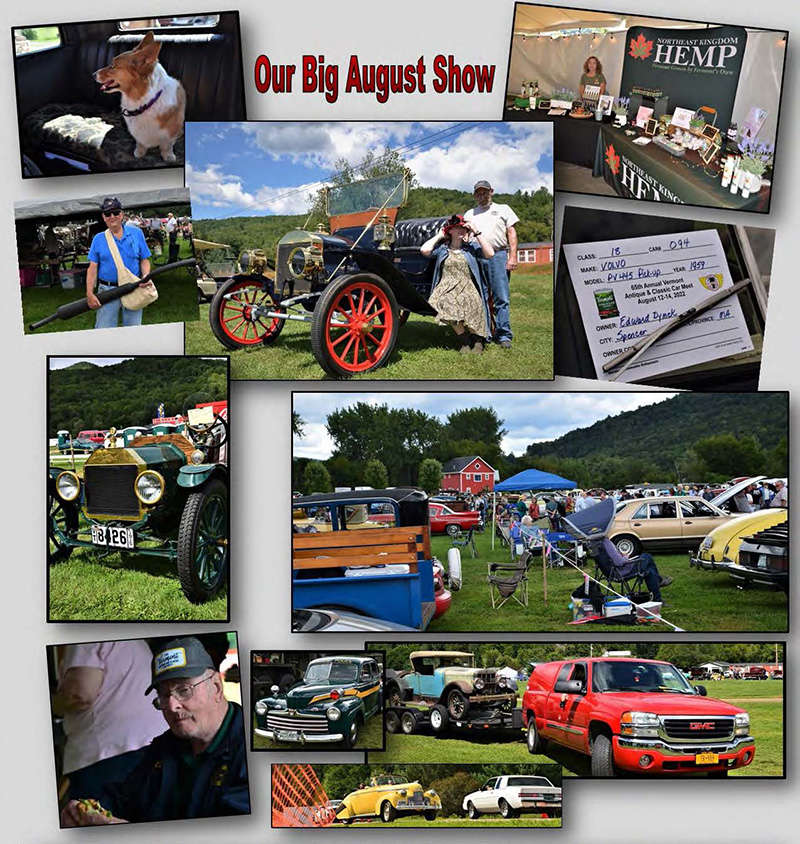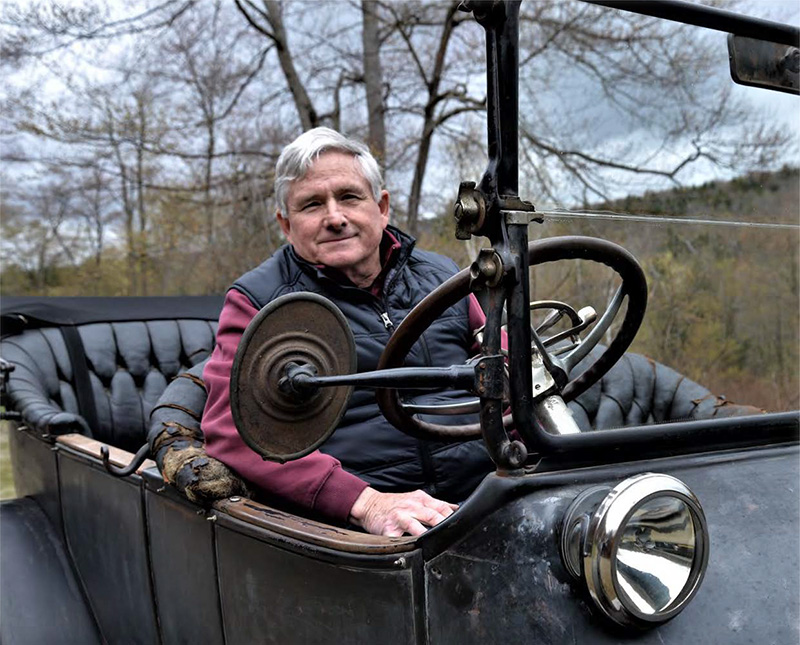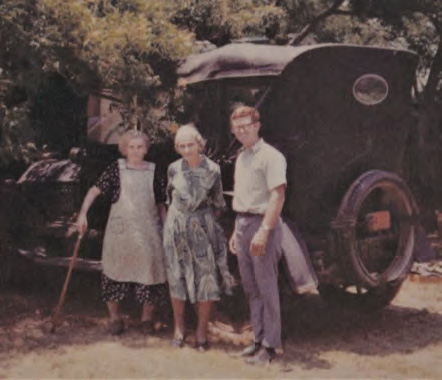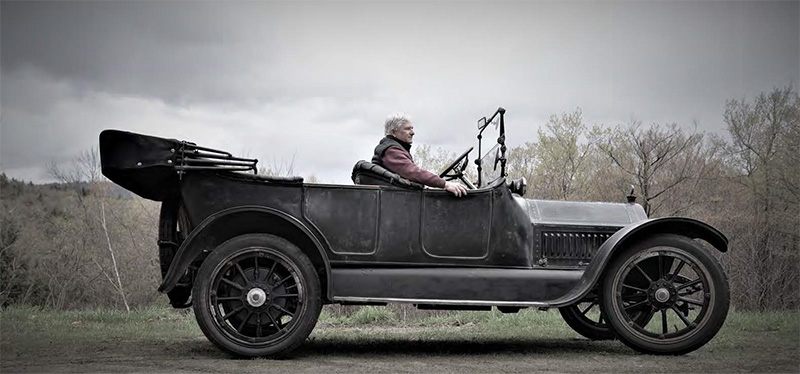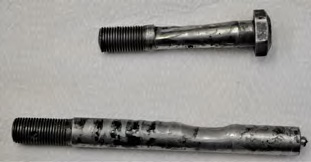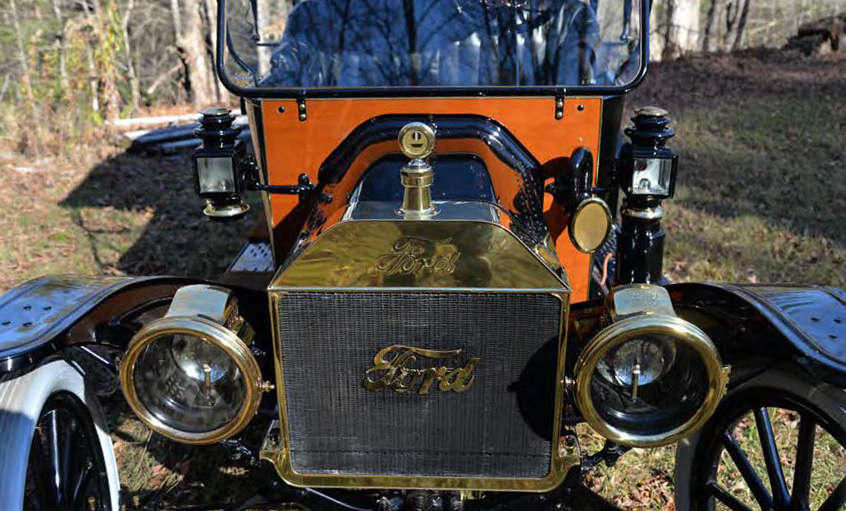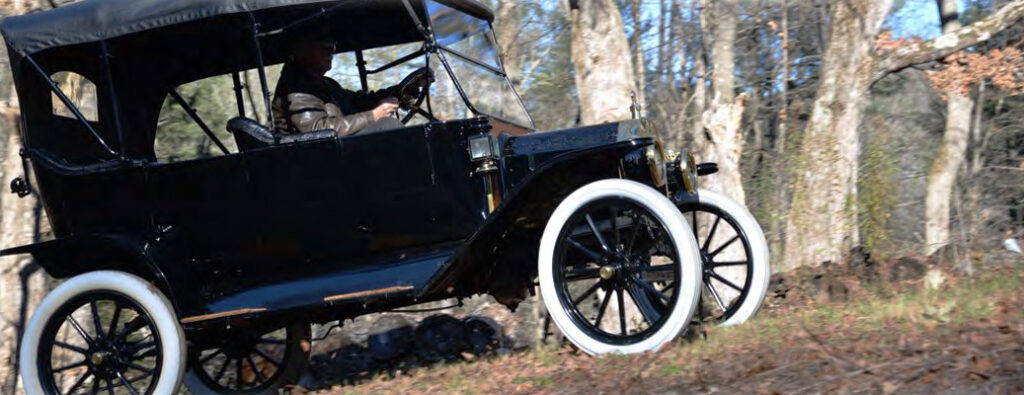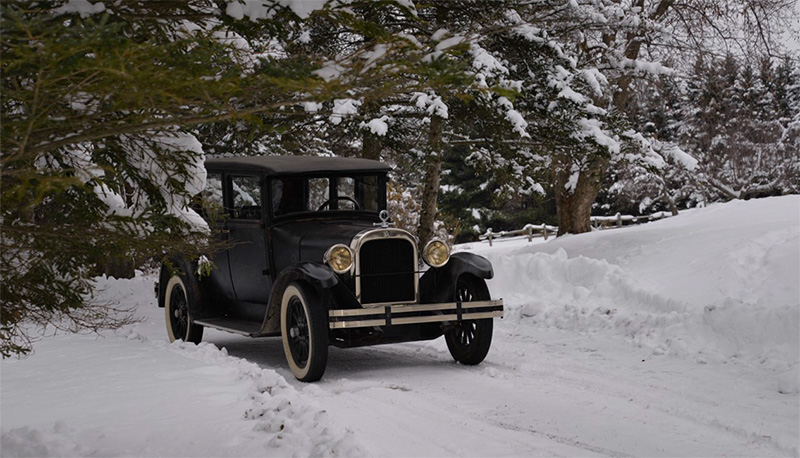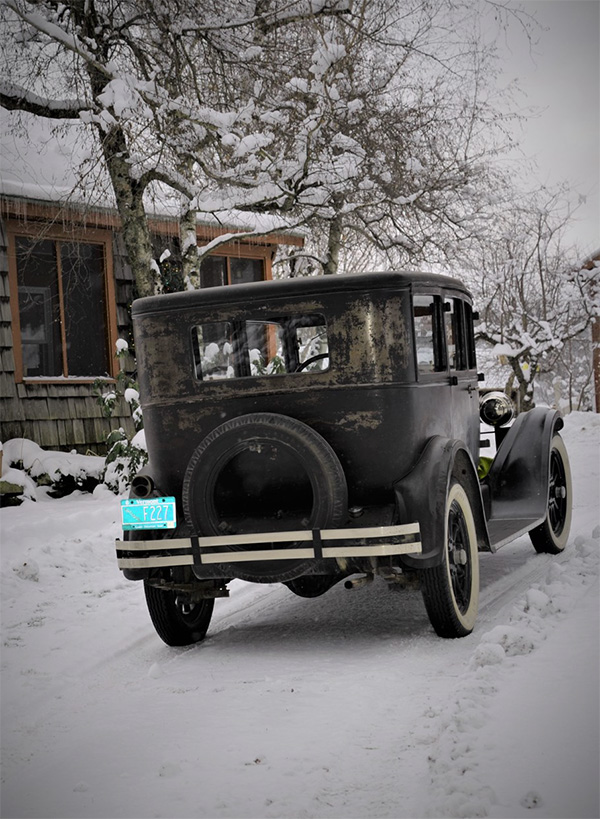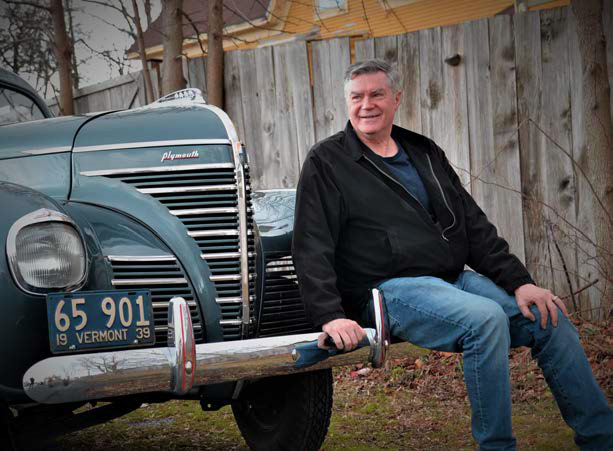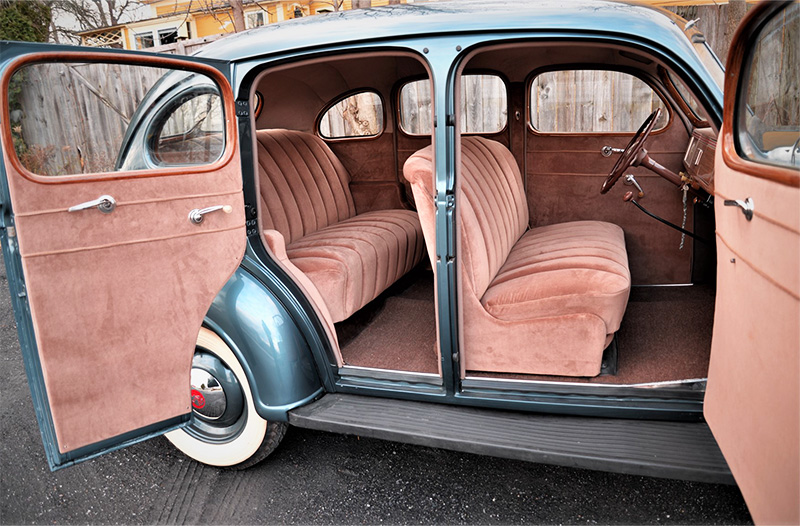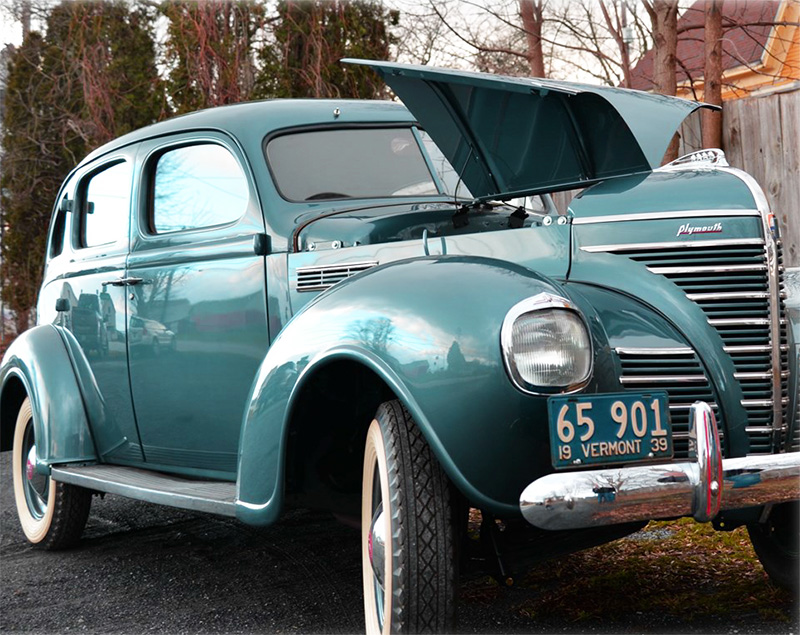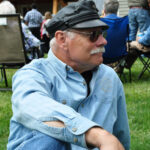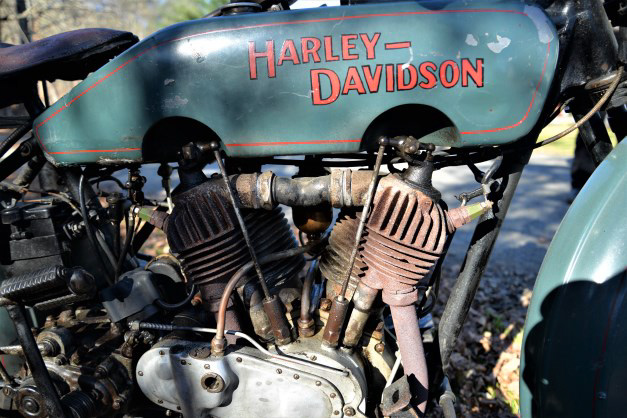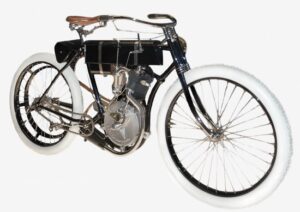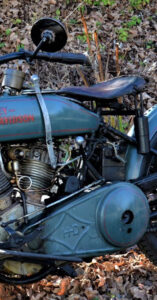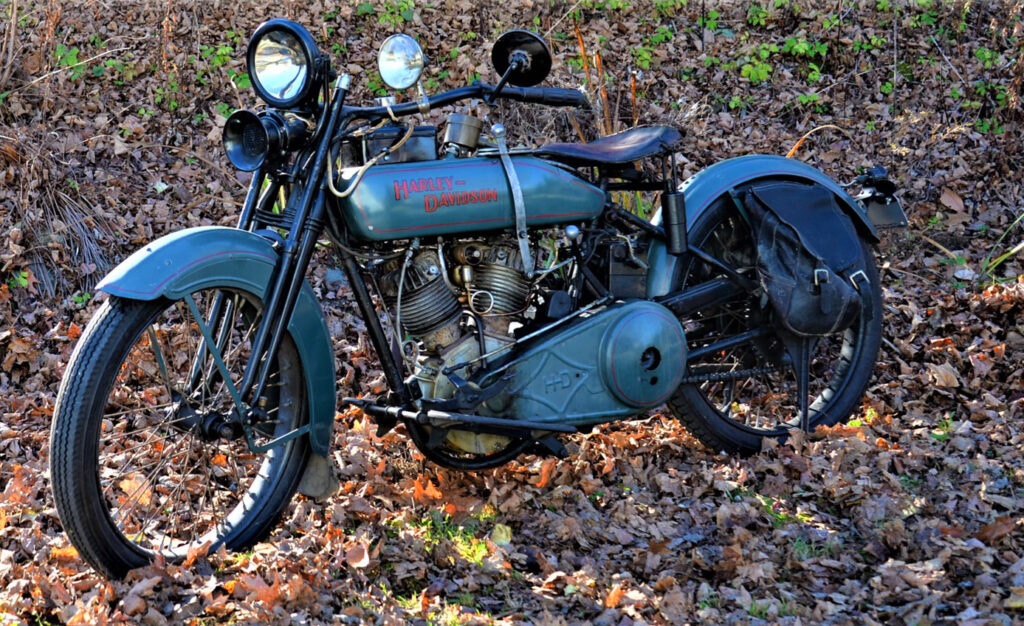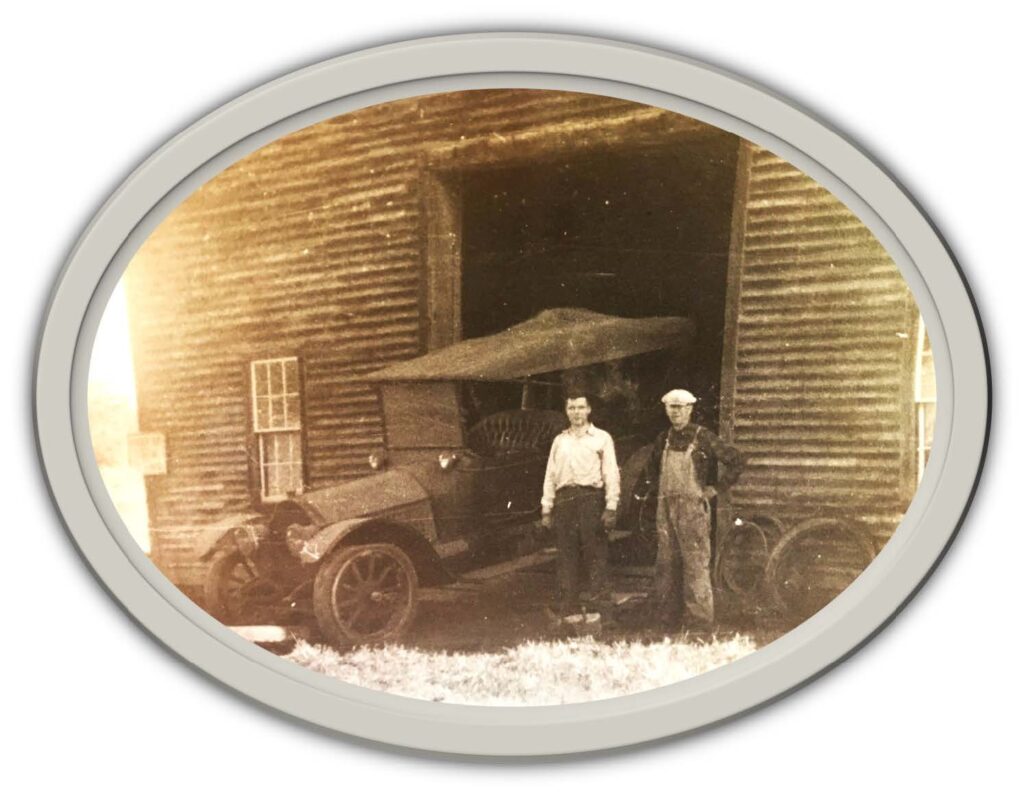
Bill Fagan’s beautiful 110-year-old Cadillac has some stories to tell. That includes being found in this Maine barn, to the left, when the 2nd owner came along in 1943 to buy it.
There is a picture of the Caddy (below) when Bill became the 4th owner.
Do you remember the Cadillac engine story from the March 2020 Wheel Tracks? It was about an engine that Fred Gonet restored. There is even a video, on our VAE website, of Fred starting the engine for us. I remember the sound was fantastic!
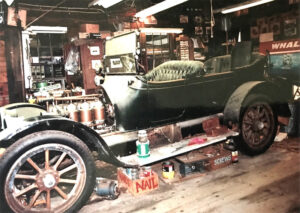
That engine is now back in its home of Bill Fagan’s 1914 Touring Cadillac, and Bill has completed his multi-year restoration project. The second owner had driven the car until the mid-1950s when it was put into storage for many years. The family had tried, unsuccessfully, to get it running when they damaged the rear engine seal, so it continued to languish until it made its way to Bill’s barn in 2007.
Bill told how he was on a Brass Era Frostbite Tour in Massachusetts when a friend said he had just run across this barn find ‘14 Caddy.
“I was interested, needless to say, and drove to his place in NH the day after the tour to make the deal. Because the car sat in the barn with a damp floor, the fenders, splash aprons and wheel rims were quite rusty and had to be repainted. The body and upholstery are original and in excellent condition. I’ve gone through the running gear and the frame, painted them and the wheels and nickel plated all the bright work.”
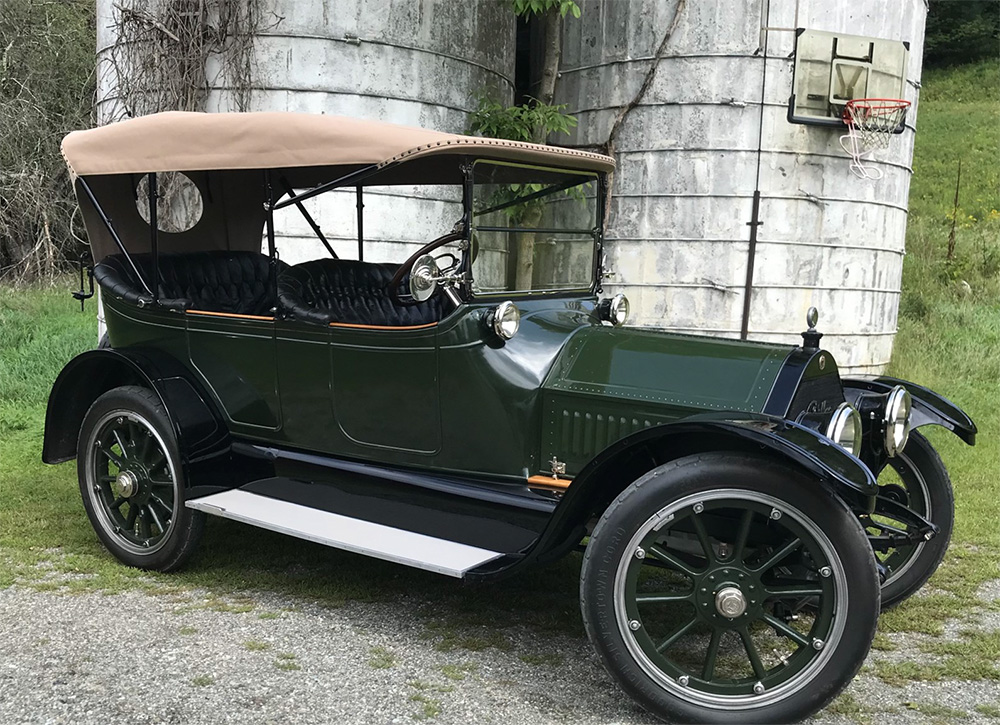
The car made its debut at our Waterbury car show this past August, winning 1st place in the brass category. You could purchase this car for about $2000 in 1914 when a Ford Model T touring car sold for about $500. That was when Henry Ford was in his second year using an assembly line to build his cars. Henry often bragged how he could build a model T in 33 minutes at his factory. 202,667 Ts came off the assembly line that year.
There was no assembly line for these beautiful Cadillacs. They were hand built in 1914. A total of 14,000 Cadillacs were built that year.










